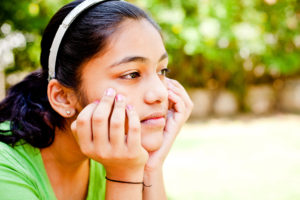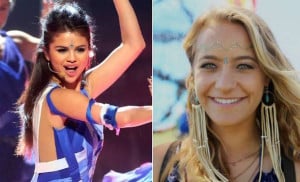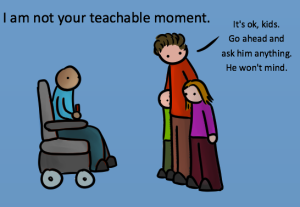Originally published on The Aerogram and republished here with their permission.

A young person sits outdoors, their head resting on their hands, looking pensive.
Lately, I’ve been thinking about Barbie – a lot.
Barbie, the quintessential California girl.
Blonde,
Blue-eyed,
Buxom,
And — rarely
Brunette.
But before I discuss my encounters with Barbie, let me take it back to the year 1993 when I was eight years old. I’d listen on repeat to “Dream Lover” by Mariah Carey as much as I would jam to “Choli Ke Peeche Kya Hai” from the film Khalnayak. 1993 was also the year I embarked on my first memorable trip to India.
At eight years old, I always loved to cook, so naturally, my utmost favorite toy was my Easy Bake Oven. My other favorite toys, however, were my Barbie dolls. Oh, how I loved Barbie. She was so beautiful. My favorite Barbie of all was Totally Hair Barbie.
Her waterfall-like blonde hair cascaded all the way down to her ankles and her totally 90s dress hugged her in all the right places. I’d brush her hair constantly and admire her femininity, all while understanding that this doll did not look like me, and none of the Barbie dolls looked like me.
I was okay with this fact. It actually made complete sense to me, even as child. Why, in a country where I was a minority, would Barbie ever look like me?
During our trip to India in 1993, we spent days touring the old palaces, forts, and mausoleums – from the romantic and majestic Taj Mahal, to the robust and magnificent Buland Darwaza. Other days were spent with my mother at sari shops, where rows upon rows of saris in colors that I didn’t know existed – combinations of blues, purples, gold, and hints of saffron and yellow as deep and vibrant as turmeric were found.
One day during our trip, I was lucky enough to be taken to a toy shop. I perused the aisles, searching for the perfect toy that would accompany me back to the United States. Aisle after aisle was filled with temptation – coloring books, paint sets, dollhouses. The final aisle I strolled through had quite a surprise waiting for me.
Eye-level to me was a face. Deep, dark, doe-like eyes, heavily lined with ebony kohl. A tiny nose which pointed to full red lips. Long and thick black hair that carried all the way down to her waist, gently blanketing an electric blue and hot pink sari. Her golden skin was kissed gently by a red bindi in between her regally arched eyebrows.
On the pink box which she was enclosed in was a label: Barbie by Mattel. I gasped and my eyes widened.
“Am I what you’ve been looking for?” she beckoned with a smile.
“I look like you Nirali, don’t I?” she seemed to be saying to me.
I grabbed Indian Barbie off the shelf and eagerly took her back to my grandmother’s house in Ahmedabad. Upon our return to the United States, my Indian Barbie dolls joined my American Barbie dolls. I played with them for days on end – but soon, over the years, they would be forgotten.
Their clothes swapped, their hair cut. Eventually, they would be abandoned by their owner who began to discover that life was changing and so was she, and that she was too old to play with dolls anymore. These Barbie dolls would eventually be given away or disposed of, rarely thought of for years to come.
As I grew, the “dolls” that I admired and looked up to changed. The new dolls, actual living and breathing women, were now Bollywood actresses. In the 1990s and early 2000s, the dolls-who-look-like-me were Bollywood divas such as Madhuri Dixit and Aishwarya Rai. Madhuri, with her effervescent smile and impeccable dance moves strutted and danced on screen and I would watch with awe. Aishwarya, with her ethereal beauty would enchant me with her elegance and hypnotic jade eyes.
But as I reached my late 20s, just as I had outgrown my Indian Barbies, I too, outgrew Madhuri and Aishwarya. While both actresses are immensely talented, they were limited by societal expectations of female portrayal in films of the times.
They too often played roles of infallible women, who, while laden with sadness, loss of love, or even abuse still maintained an outwardly perfection. These dolls too, would be forgotten.
In 2014, a 28-year-old me found herself on Shaadi.com. Indian Barbie wanted to meet her Indian Ken. So she did. So she thought. It was at this time that I began to deeply interact with an Indian man who lived in Sydney, Australia.
That summer, I found myself in Australia, facing a man at dinner who wasn’t whom he had advertised to be. Heartbroken and disappointed, I called my parents. I cried hysterically and said I wanted to return home immediately.
“You’re in Australia, why would you want to come home?” my father said to me. And so I stayed. The first few days were tough – lonely and confusing – but the rest of the days were spent touring romantic wineries, exploring hidden restaurants, and marveling at the Sydney Opera house – all by myself, proudly.
That winter of 2014, my family and I embarked on another trip to India. We toured regal and rustic Rajasthan and devoured pav bhaji with delight at food stalls in Gujarat. On the flight back to the United States, I couldn’t find a movie to watch.
“Watch this one,” my sister Anisha advised.
“Which one? This one? Queen?” I asked.
“Yeah,” she said.
“Is it good? Will I like it?” I asked.
“Trust me. Just watch it,” she assured me.
I watched it. And I cried in the dark of that endless flight back home. Not only because I felt the protagonist Rani’s pain and beauty as she finds herself alone in Paris dumped by her egotistical and ungrateful fiancé.
But because I realized that now, as a grown-up version of me, India offered me a new doll to return home with.
A doll that looks like me with her raven hair and tan skin, yes, but also a doll who feels the way I do, who loves the way I do, who feels angry and sad and confused as I do. A doll who wears her heart on her sleeve and makes mistakes but learns and grows from them.
My new dolls, Bollywood actresses such as Kangana Raunat, Deepika Padukone, and Priyanka Chopra were exactly the ones I had been looking for all along. Kangana, who happily takes on roles that portray what it is truly like to be an Indian female – defying societal expectations while remaining sagacious; Deepika, who has openly admitted to bouts of depression and how she has overcome it; and Priyanka, who refuses to be type-casted and now inspires others as she makes waves in the United States on the ABC series Quantico as the first Bollywood-to-primetime South Asian lead actress.
They all have made me realize that while I was on a journey to find a doll who looks like me, I eventually found women who are like me.
These women who are like me are well aware and acknowledge that without struggle, there is no strength. And it is strength that makes a woman far more cherishable than any doll.
Barbie, the quintessential Indian girl.
Bold and Brazen
Bronzed Skin
Brown-Eyes
Black Hair
And always —
Beautiful.
[do_widget id=’text-101′]
Nirali Patel is a teacher who concocts recipes for her blog, VerucaSpice.com. She also teaches cooking classes in Palm Beach, Florida, specializing in promoting cultural awareness through food.
Search our 3000+ articles!
Read our articles about:
Our online racial justice training
Used by hundreds of universities, non-profits, and businesses.
Click to learn more




















